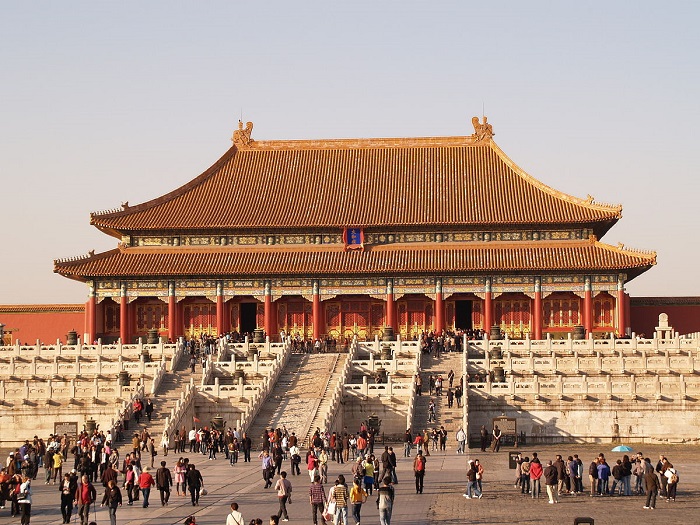ISABEL RUBIO ARROYO | Tungsteno
Considered one of the most famous palaces on the planet, the Forbidden City, surrounded by a colossal wall and moat, is a masterpiece of Chinese architecture. It comprises 980 buildings—including palaces, audience halls, temples, gardens and courtyards—and covers an area of 72 hectares. It is considerably larger, for example, than the Vatican City at 44 hectares. We take a look at the inner workings of this megastructure in the heart of the city of Beijing.
Ice roads to move gigantic stones
In the 15th and 16th centuries, slippery ice roads were used to transport huge stones from a quarry to the centre of Beijing (about 70 kilometres). This is according to a 500-year-old document translated by the University of Science and Technology Beijing and reported in a study published in the journal Proceedings of the National Academy of Sciences (PNAS). The heaviest of these stones weighed more than 330 tonnes.
The document in question recounts a dispute between imperial officials over how to transport more stones to the Forbidden City. While some argued that mules and carts were cheaper, others felt that men and sledges were a safer way to haul the expensive stones. That find sparked interest among researchers and "raises tremendous engineering questions", as Princeton engineer Howard Stone tells National Geographic magazine: "How in the world did they get these massive rocks to Beijing?" he asks.
Workers took advantage of the cold winters in northern China and dug wells every 500 metres to obtain water to pour over the ice and lubricate it to make it more slippery. Stone says some people have asked if the wells are still there. "It would be interesting to look for them," he suggests. Charles Faulkner, a former professor [now deceased] in the anthropology department at the University of Tennessee, was not surprised that these huge stones were transported: "If you get enough people, enough rope, and enough time, you can move just about anything."

The Forbidden City is located in the centre of Beijing. Credit: Patrick Denker / Flickr
Precious wood, fine gold and clay bricks
The Forbidden City was home to China's emperors and their families during China's last two imperial dynasties—the Ming and Qing—and was the ceremonial and political centre of the Chinese government for nearly 500 years. Its layout follows the practices of Feng Shui—an ancient Chinese system of spatial arrangement and design that seeks to harmonise the flow of energy in a given environment. All the most important buildings in the complex face south to honour the Sun.
More than a million labourers and 100,000 craftsmen built the Forbidden City between 1406 and 1420, including carpenters, masons, painters, sculptors and porcelain experts. Materials from all over the country were used in the construction of the Forbidden City: precious woods from Sichuan in south-west China, fine gold leaf from Suzhou near Shanghai, and clay bricks from Shandong in eastern China.
More than a million people were involved in the construction of the Forbidden City. Credit: Megaprojects
This enigmatic palace was so named because when it was first occupied in 1420, most of the kingdom's subjects were forbidden to enter the area. The Forbidden City ceased to be the seat of the Qing imperial government with the Chinese Revolution of 1911. Despite the ravages of the revolution and the war with Japan between 1937 and 1945, the complex remained in good condition.
In fact, it was declared a World Heritage Site in 1987 and is listed by UNESCO as the largest collection of preserved ancient wooden structures in the world. Even today, much of the complex remains closed to the public: visitors are barred from some working areas, sections that have not been repaired and places where some cultural relics are restored. Despite this, some 15 million people visit this great palace every year to see its best kept treasures.
· — —
Tungsteno is a journalism laboratory to scan the essence of innovation.